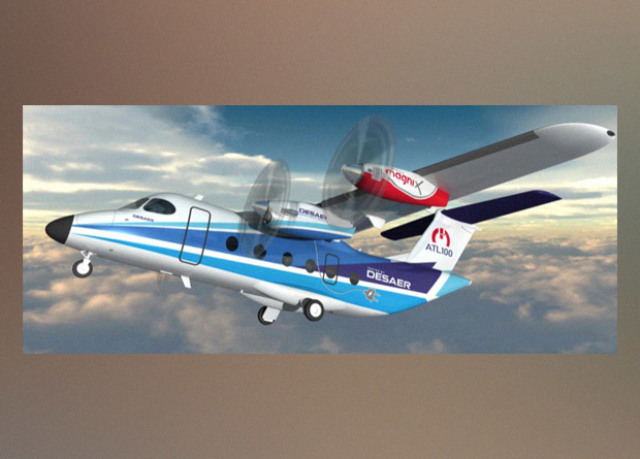The Brazilian company Desaer will develop a hybrid aircraft ATL-100H. As reported by New Atlas, it will take off and gain altitude mainly due to electric motors, and in cruising mode, for the most part, use turboprop engines.
Hybrid aircraft are considered a compromise option in terms of environmental friendliness, efficiency and flight range. Unlike fully electric, they are able to travel considerable distances. At the same time, hybrid aircraft consume less fuel than conventional ones.
Hybrid aircraft engines run on electricity, the source of which is a generator. The power plant in the generator can be almost any internal combustion engine with sufficient power, including a turboprop. But usually they are responsible for the promotion of the generator, and not for the formation of traction. For example, a turboprop engine will receive a Trifan 600 three-fan aircraft. High-power batteries will help him take off and land vertically, and the Catalyst engine will work in flight.
The Brazilian company Desaer is also going to develop a hybrid aircraft that will take off and gain altitude mainly due to electric motors. Two turboprop engines with a capacity of 1000 horsepower each will have most of the work in cruising mode.
The hybrid aircraft was named ATL-100H. The Brazilians took the turboprop ATL-100 project as the basis for its creation, the prototype of which should appear "in the coming years". With a length of 16 meters, the wingspan of the ATL-100H reaches 20 meters. Its range is more than 1600 kilometers. The aircraft has several configurations. One is designed for 19 passengers, the other for 12 paratroopers in full gear, and the third is cargo.
In addition to two turboprop engines, the ATL-100H will have two magni350 electric installations under the wing. Each of the magni350 weighing 111.5 kilograms includes an electric motor with a capacity of 350 kilowatts. The flight range and speed of the prospective aircraft are not specified. The developers say that electric motors will allow it, depending on the flight range, to use 25-40 percent less fuel than when using only turboprop engines.
A number of companies are currently engaged in hybridization of turboprop aircraft. Earlier we wrote about the Canadian passenger DHC-8, on which it is planned to mount a hybrid propulsion system.
Vasilisa Chernyavtseva

